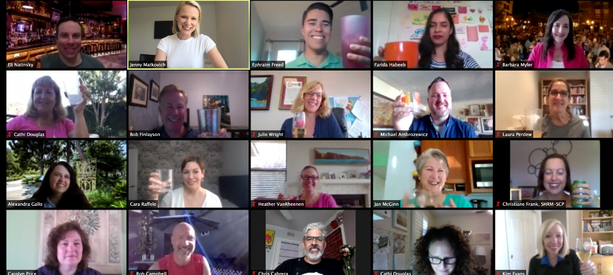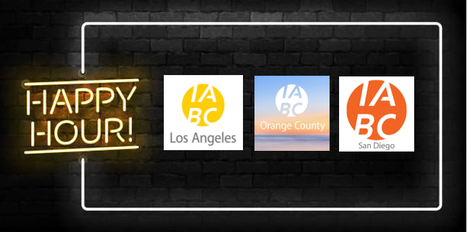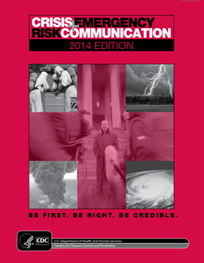|
Thank you to all who attended the IABC Southern California virtual happy hour on May 14. Members from the organization's Los Angeles, Orange County, and San Diego chapters met online to share drinks and COMMingle. The event included introductions, announcements, breakouts and, of course, a group photo!
In wake of the pandemic, IABCLA has moved to an all digital format. The chapter will have many more virtual programs in the weeks and months to come. Please stay up to date on happenings by visiting the chapter’s website — IABCLA.com — and by following the group on social media: Facebook, LinkedIn, Twitter, and Instagram. (Note: I’m IABCLA's vice president/president-elect, and I often post updates on chapter happenings.)
0 Comments
IABCLA is hosting a virtual happy hour for Southern California IABC members on Thursday, May 14 at 5 p.m. Pacific time. The chapters of Los Angeles, Orange County, and San Diego
are invited to bring their drink of choice, add their wildest Zoom background, and COMMingle! Click here to sign up! (Note: I’m IABCLA's vice president/president-elect, and I often post updates on chapter happenings.) Note: Deborah Hudson, my fellow IABCLA board member, wrote the following piece for the chapter blog and I wanted to share. I serve as the group's vice president/president-elect.
From the article, I took a run at the CDC website to find what they had to say about communications emergencies. I found a 460-page manual for a course titled Crisis Emergency and Risk Communication. Published in 2014, the social media section may seem a little dusty, but even the table of contents gives a sense of the thorough and practical guidance available for communicators. There’s something reassuring to know the course was built by people who have seen devastating emergencies and crises before and have field-tested their response.
Some of the things I am taking away can be put on a wallet card: Four ways people process information during a crisis: o We simplify messages. o We hold on to current beliefs. o We look for additional information and opinions. o We believe the first message. The six principles of effective crisis and risk communication: o Be first. o Be right. o Be credible. o Express empathy. o Promote action. o Show respect. Yes, in many regards it’s basic stuff. But for me that’s the just ticket during these overwhelming times. Note: I wrote this piece on team building for the IABCLA chapter blog. I serve as the group’s vice president/president-elect.
“The purpose of a seminar is to take time to step back, to reflect, to get to know each other, to identify problems, priorities, goals, and plans,” he said. “For most of my career, it’s been my job to bring people together, to communicate, to help others collaborate more effectively and help folks reach their potential.” Ephraim shares his philosophy on the two intertwined components of teamwork: - Trust: great teams have a foundation of trust. Building trust needs to be an intentional effort and it takes time. It also requires people to be vulnerable with one another, to learn about each other, and come to appreciate one another. - Structure: good teamwork and collaboration relies on the right process and arrangement. In order to have people work together, you need to have the right system in place in order to produce the best results. He noted trust is fundamentally about safety. What he’s seen during his career are leaders who miss out on critical information employees possess — on the market, customers, systems the company uses — because workers don’t feel they can share their thoughts openly. “Trust kills bad ideas, trust drives innovation,” he said. “When it’s a good idea, people will recognize it, and when it’s a bad idea, people will tell you it’s a bad idea — but individuals have to feel safe in order to do that. They need to trust their leaders are good people, their leaders care about them, their opinion matters and it will be respected and heard and thought out.”
How do you build trust? Ephraim explained the key is to first create vulnerability. He makes a point to incorporate into his sessions moments where people reveal who they are. When people do this, they create vulnerability and that vulnerability breeds trust. If, for example, a group was working on a marketing initiative, he might pose the question to each person: “What’s your favorite marketing campaign — and why?” This allows for personal disclosure that ties into larger goals.
“You have to build the right levels of vulnerability into a team building workshop," he said. “When people let their guard down, they start to see the human in there, they start to be more forgiving of each other, they start to be more inquisitive about each other, they start to make connections at a personal level — all of that helps to build trust and helps others work together better." As far as structure, a classic teamwork exercise Ephraim facilitates during conferences is brainstorming. He noted the most common way to brainstorm — everyone randomly throws out an idea — is not the best way to execute the process. Given power dynamics and different personalities, extroverts and leaders are more likely to speak up than introverts. Also, there’s going to be a certain “herd mentality” where somebody will suggest an idea and others will go along with it. You, therefore, might lose brilliant insights from those who have less hierarchical power. A better way of brainstorming, he suggests, is to provide Post-it Notes all in the same color, as well as pens with the same shade of ink. Each person adds their ideas to the pieces of paper, and then the team organizes the messages silently and collaboratively. In short order, folks will have collectively built a prioritized list. This approach will yield a rich collection of ideas, and the group will leave with better alignment and a sense of shared ownership because they contributed equally in generating the outcome. He offers this final thought on team building: “There’s a great saying, ‘If you want to go fast, go alone. If you want to go far, go together.’ I think about that a lot — when you’re trying to build a team or get people to work together you have to slow down so folks can build trust, so you can then prepare to do big things and great things over a period of time.” |
AuthorI'm Eli Natinsky and I'm a communication specialist. This blog explores my work and professional interests. I also delve into other topics, including media, marketing, pop culture, and technology. Archives
July 2024
Categories |





 RSS Feed
RSS Feed